The Sweetarts
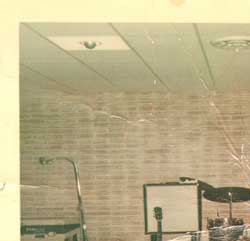 |
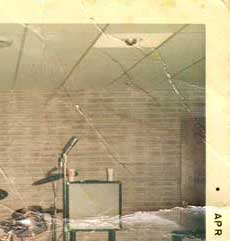 |
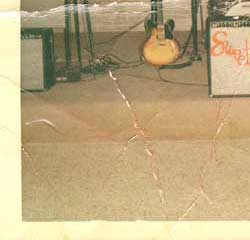 |
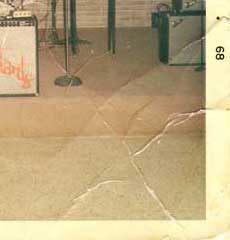 |
On March 1, 2001, the Sweetarts will officially unveil their very own web site. Best known for being the first band to sign with the Sonobeat label, the '60s Texas band's web site is not only a feast for the eyes, but also for the ears. To commemorate the launch of the web site, The Lance Monthly asked the band to answer a few questions for us. For even more information on this great band, and to hear some rare recordings, please check out the web site at: http://listen.to/thesweetarts . You won't be sorry!
An Interview With The Sweetarts
One of Austin, Texas's Premier Bands of the Sixties
[Lance Monthly] Where and when were the Sweetarts formed, and by whom?
[Dwight Dow] As I recall, we were at a practice or jam session. Someone had called needing a band for a frat party and we took the job. We had to come up with a name real fast while the guy was on the phone and [so we] picked the name on the candy that I was eating - Sweetarts. We had probably less than ten tunes for the gig, but managed to survive the four-hour party with a little rehearsal during the breaks. It must not have been too bad since we got booked again immediately and decided to keep the name.
[Ernie Gammage] Dwight Dow and I had played together for two years in the Fabulous Chevelles, an Austin, Texas frat and private party favorite. The other member, and leader of the band and booking agent, was Charlie Hatchett. Hatchett and I met at a frat party and he said he wanted to start a band and I should play bass. He'd heard me sing and thought it would be a good deal. I'd never played bass, but by the following Friday, I had a new Kay hollow body, a 50-watt Fender Bassman, and was playing three sets a night. I remember that at the first gig, I couldn't sing and play at the same time and just sort of thumped the strings, playing the correct bass pattern when I wasn't singing. When the Chevelles arrived on the scene, Austin music--Anglo music anyway--was pretty sedate. Bands with names like The Holidays were the big thing. There was an unbelievable amount of work because the University of Texas campus was loaded with fraternity boys whose weekends were devoted to partying. Hatchett was a very aggressive booking agent as well as musician. In three weeks, we were making twice what any of the other bands were and, in no time, were at the top of the heap. Although we were all in college (Hatchett was in law school) we worked three or four times a week. At one time I had so much money stuffed into a shoe box that I thought about buying a second car (a Jaguar) just because I could. My Dad used to joke to his friends that I was sending him money from college instead of the other way around. A highlight of the Chevelle experience was meeting Chuck Berry. We were playing a big UT/OU frat party in Dallas, swapping sets with a Black band from that area at the Holiday Inn. As it turned out, Chuck was staying there, had finished his gig at some cavernous hall downtown, and was coming back to go to bed. He stuck his head in the room, we recognized him and started calling for him to come play--which he did. Later, after the gig was over and we'd packed up, Hatchett called his room and asked if we could come up and visit. To our surprise, he said "sure!" We stayed in his room and talked about gigs and song writing and what it was like in the "big time." He was extremely nice and seemed to be in no hurry for us to go. He was a real gentleman. One other thing happened that night that went on to influence the Sweetarts' music. On the breaks when we were off and the Black band was playing, Dwight, our drummer, sat mesmerized by the drummer in that band, watching how he played the kick (bass) drum. Up to that point, every drummer we knew played a 1/3 kick pattern--on the first and third beats of a measure. What Dwight learned that night and incorporated into the Chevelles' and then the Sweetarts' music was a much funkier kick drum pattern. We actually used to have other bands come hear us just to try to figure out that crazy beat! Some time in 1965, Dwight and I quit the Chevelles because we were tired of some of the material, particularly the songs like "Hot Nuts," a raunchy frat favorite by Doug Clark and His Hot Nuts. We decided on the name "Sweetarts" and recruited two other musicians: Erbie Bowser on organ and a guitarist whose name is forgotten. Thus, became the Sweetarts: "Half Black, Half White, You Gotta Hear 'em, They're Outta Sight!" The reality was that there was a lack of a common musical vocabulary and it was difficult to rehearse. The Chevelles were known for knowing the newest tunes as soon as they came out, and not being able to do this was frustrating. The other guys were older, had day jobs, and just couldn't put the time in. Erbie was a DJ. He even wrote a book that introduced his brand of jive talkin'. Although Black bands were common at the frat parties--Cookie and the Cupcakes, Freddie King, and Doug Clark just to name a few--as far as I know, we were the only integrated band working in Austin at that time. It didn't seem like a big deal, however. After a short period, Erbie and his buddy left and two other musicians were recruited, Tom Van Zandt on Wurlitzer piano, a friend of mine, and Pat Whitefield whom I'd met at a frat party. I switched to guitar and Pat played bass. I think he'd had his bass about a week before the first gig. A friend of mine from Houston, Mike Galbraith, joined to sing harmony and play percussion. In this incarnation, the band jumped ahead by leaps and bounds. Having more singers and a keyboard made playing the copy songs easier. The original songs, which I'd begun writing in the Fabulous Chevelles, became richer and more exciting in the new instrumental format.
[Tom Van Zandt] The 'Tarts were formed by Ernie and Dwight, who were both ready to jump ship from the Fabulous Chevelles, Charlie Hatchett's 1963 vintage Chuck Berry power trio. Ernie recruited me and Pat Whitefield to fill out a quartet, with Ernie on lead guitar. At the time, I was playing keyboard occasionally in a group called The Four Skins, which was notable mainly for knowing many, many songs by Doug Clark & the Hot Nuts (The Kappa Sigs loved us). [Editors' note: Interestingly, Lance Monthly editor, Dick Stewart is also an early '60s Kappa Sig alum from the University of New Mexico who claims that his brothers were the number one party animals on campus]. I think it was Dwight who came up with the name, cleverly stealing it from the candy, which I never liked. We needed to fill out a four-hour fraternity party set in a hurry, so we quickly learned a lot of Chuck Berry from the Chevelles and some New Orleans R&B off "Home of the Blues," one of my main keyboard influences. We added some James Brown, taking advantage of Ernie's blue-eyed soul vocal chops. About that time, the Beatles hit America like a tidal wave, and we learned almost everything they put out. It became clear pretty soon that to do the new English stuff right, we needed stronger high harmonies than either Pat, Dwight, or I could deliver, so Ernie began asking his old high school pal and singer Mike Galbraith to sit in. After about a year Ernie persuaded us to cut Mike in for a share, and the Sweetarts became a 5-piece. The band got tight and, with the Beatles harmonies, Dwight's wicked right foot driving the soul and R&B stuff, and Ernie's natural front man ability, the 'Tarts were soon kings of the frat party circuit. Almost from the beginning, Ernie would bring in original tunes, and we continued to do one or two of Ernie's songs a set for the next three or four years, until we moved into the Fast Cotton mode. After a year or two we replaced Mike on vocals with Rock and Roll Randy Thornton, who had fronted some bands in West Texas, including one called The Screaming Skulls, from Midland. About the same time, Ernie turned over guitar duties to Steve Weisberg, from Dallas. Now the Sweetarts were ready to kill, with power duo stand-up singers, double stack Marshalls, and much less of a college boy look. Those Marshalls also put me on a continuous and ultimately unsuccessful quest for ways to really amplify a Hammond M3.
[LM] Whew! Could you please recap the band's best remembered line-up for me?
[Ernie] Ernie Gammage, guitar and lead vocals; Dwight Dow, drums and vocals; Pat Whitefield, bass; Tom Van Zandt, keyboards (Wurlitzer piano, Farfisa organ, Hammond organ), vocals; and Mike Galbraith, vocals and percussion.
[LM] Aside from the frat parties, where did the band typically play?
[Ernie] Staples for the band were weekly--mostly weekend--private parties, mostly for University of Texas fraternities. Jobs were so plentiful that we often worked three gigs a weekend, sometimes driving to San Antonio to play "after" parties. We played San Antonio, Dallas, Corpus Christi, Houston and out in West Texas. While out that way once, we cut some tracks at Ben Hall's studio. Hatchett had to cash our paycheck at the Safeway to pay for the session. The songs are pretty cool, drenched as they are in reverb on everything! There was a vibrant club scene as well. In the '60s, the clubs closed at midnight or 1PM on Saturday, so it was not backbreaking work. Rooms like Club Saracen, the Jade Room and the Action Club all provided steady work. One club, the New Orleans Club, became home for a year's worth of Wednesday nights. Other gigs in San Antonio at the Pussycat and Houston followed.
[Tom] We played mostly fraternity parties in the beginning. After a year or so, we began to play some clubs, like the Saracen, the Jade Room, the New Orleans, and occasionally the original Soap Creek Saloon. We eventually did regular weeknight gigs at the Saracen, Jade Room, and New Orleans. Our year-long stint on Wednesday nights at the New Orleans was probably the peak of the Sweetarts career. Other notable gigs included two consecutive New Years Eve parties at the Royal Orleans for the Tulane Kappa Sigs - big New Orleans party trips, and some rock and roll concerts at the old Aztec theater in downtown San Antonio, which coincided with one (or maybe both) of our singles breaking into the top 10 on San Antonio radio. (A vivid memory from one of those gigs: I had heard on the radio that Alan Ginsburg was in San Antonio for a poetry reading. That night, after the Aztec concert, I went outside for a cigarette, and there on a downtown street corner I saw what appeared to be a homeless guy in a long overcoat and flyaway hair, head tilted back mumbling into the night air. Then it hit me: it was Alan Ginsburg and he wasn't mumbling, he was chanting up into the stars. That was pretty cool.)
[Pat Whitefield] We were a band that primarily played for fraternities at the University of Texas at Austin. There were numerous parties every weekend and we played as many as possible. The clubs that we played were the Saracen Club, Swingers a Go Go (later or earlier called the Action Club), the Jade Room, the Cotton Club in Lubbock, TX and the New Orleans Club. We somehow managed to play at the San Antonio Country Club quite a bit during the early years. If someone had the money, we found the time; after a freak snowstorm we played behind and on the bar at place on Lake Austin at the bequest of some party guys who thought that the snow should be celebrated.
[LM] I've seen ads for many of those places you played, all advertising many great local bands of the era. What bands do you especially recall?
[Ernie] Austin provided The Fabulous Chevelles, the Wig, Baby Cakes, New Atlantis, Georgetown Medical Band, South Canadian Overflow, Mariani, Eric Johnson, Shepherd's Bush, Strawberry Shoemaker, Leo and the Prophets, Conqueroo, The Mustangs, Cavaliers, The Rhythm Kings and Lavender Hill Express. Felicity (from which Eagle Don Henley came), would drive down from East Texas. The Briks, Beefeaters, and Chessmen were staples from Dallas. The George, The Chevelle V, Fugitives, the Sparkles, and Pumpkin from West Texas, along with the Playboys of Edinburg from that city in the Rio Grande Valley, the Thingies from Miami, and John Fred and His Playboy Band from Tyler. They all thrived in the Austin music scene. Once, about 1968 or so, we played a "Youth Decency Rally" at a high school football stadium in Temple, Texas. The Felicity was the other band on the bill. We were all drinking beer and doing who knows what else in our respective band buses. I always felt that was pretty ironic at a "decency" rally! I mentioned this to Don a few years ago and he claimed amnesia!
[Tom] The very earliest were some matching sport jacket groups (like the early 'Tarts) with names like the Escorts and the Gentlemen. Some of the earliest good bands I remember hearing in Austin were the wonderful house bands at Sam's Showcase, Ernie's Chicken Shack, and the IL Club on the east side of town. Other Austin bands on the fraternity/club circuit included the Fabulous Chevelles (Charlie Hatchett continued with Al Stahely for many years after Ernie and Dwight moved on); the Lavender Hill Express; and the Georgetown Medical Band. As we moved into the psychedelic era: the Bubble Puppy; New Atlantis Hard Rock Band (a scary Vulcan Gas Company favorite with Jim Mings on guitar, Mike Reed on B3, Jay Mead on drums, and Danny Galindo on bass); Ramon & Ramon and the Four Daddios (Bill Dorman, Tiny McFarland, and some other hippies); Pumpkin; and for a while a west coast group called Sweet Smoke (??).
[Pat] We saw all of our friends in Austin play: the Wig, the Chevelles, the Babycakes, Shivas Headband, the Strawberry Shoemaker, the Georgetown Medical Band, the New Atlantis Hard Rock Band, Contraband, T.D. Bell, the Jets, the Electromagnets, Roky and the Thirteenth Floor Elevators and Conqueroo. From out of town came the Sparkles, the Zachery Thak, the Chevelle Five, the Briks, the Chessmen, the Felicity, the Moving Sidewalks, Albert Collins, Freddy King, Otis Redding, Mother Earth, Moby Grape, the Beach Boys, the Lovin' Spoonful and far more than I can recall.
[LM] Did any of these bands have any direct influence on you?
[Tom] In addition to the New Orleans sound of "Home of the Blues," I listened to a lot of Freddie King and the other Kings - Albert and B.B. Memorable live shows from that era include James Brown at Palmer Auditorium in Austin in 1964, when "I Feel Good" and "Please, Please" were still on the charts; Ray Price and the Cherokee Cowboys at the Rodaire Club outside of Shreveport; Ernie K-Doe at Sam's Showcase in Austin: and a late night jam with Freddie King and Steve Miller at the End of Cole Street club in Dallas.
[Pat] The Beatles and the Stones influenced any young musician in the mid 1960's; they were unavoidable! But those of us in the Sweetarts who had grown up in the larger cities were heavily influenced by blues, rhythm and blues, soul music and funky jazz in addition to the British Invasion. Later the Band became a huge influence on all of us as we tried playing their music.
[Ernie] I grew up in Houston and was heavily influenced by black performers of the day. Prior to that, the kind of music I listened to was the crooners of the late '40s and early '50s. Never did listen to country music. An after party the night of my high school graduation--a big dance for the graduating seniors--sort of sums up my musical heritage. The bands that played were Bobby "Blue" Band and his Orchestra, Freddie King, and the Bobby Doyle Trio (Kenny Rogers played bass). I used to slip into the Jimmy Menutis Club in Houston and hear Jimmy Reed, King Curtis and Bo Diddley. There was a great club on South Main where Johnny and Edgar Winter played. Go-go girls danced in these big windows and cars would line up for miles to drive by and watch them, the Winter brothers' white hair bobbing to the music they played. Years later I had an extra ticket to the Cream/Vanilla Fudge concert at Jones Hall in Houston. Johnny bought it and we sat together. Incidentally, Vanilla Fudge fried Cream!
[Dwight] Locally, the Sparkles had the most influence to me and, of course, the Beatles certainly helped our popularity as their music fit us well, instrumentally and vocally. Personally, I was most influenced by the likes of B.B. King, Taj Mahal, The Band and Otis Redding. I did and still do favor the blues.
[LM] Being from Texas, what about the 13th Floor Elevators?
[Dwight] My answer to the influence of other bands will probably differ from Ernie, Tom and Pat because I felt very little influence from the 13th Floor Elevators other than the fact that they brought some national interest to the Austin music scene.
[Tom] The 13th Floor Elevators were fascinating to me, not only musically but as a commercial and artistic phenomenon. I loved listening to Roky's out there lyrics floating on that sine wave electric jug cushion. Depending on my "mood," the jug would hit me as either hypnotic or slightly irritating. But I was always amazed at what the Elevators could do to that special mind-expanded crowd that they seemed to attract like June bugs to a screen door. (The Sweetarts could whip up a pretty good crowd frenzy too, but our crowd was generally fueled more by alcohol than plant derivatives and pharmaceuticals.)
[Pat] The Elevators really didn't affect our music at all; they were totally into their own original music while the Sweetarts sampled bits and pieces of anything with a good dance beat while trying to write a "hit" song for radio airplay.
[Ernie] Musically, the Elevators had little influence on the Sweetarts. They were a little whacked out and we were all college boys. But we certainly knew of them and were proud of their accomplishments. Once, we were playing a week long series of fraternity rush parties at Tulane University in New Orleans. I went into a campus quick food spot and heard "You're Gonna Miss Me" on the jukebox. That was VERY cool! In mid-'68, we had a gig in Houston and spent the afternoon in Walt Andrus' studio cutting four sides. Walt was the owner of International Artists, the label the Elevators were on. I don't remember if there was a deal in the works or what. Nothing happened to those tracks, but they are AWESOME! Interestingly, the band that the Sweetarts morphed into, Fast Cotton, featured Danny Galindo on bass. Danny played on one of the Elevators' albums. Then again in the early and mid '70s, I played in a band called Plum Nelly that featured Benny Thurman on fiddle. Benny had been the original Elevators bassist. It was sort of a psychedelic country band and Benny fit right in!
[LM] It sounds as if some great Sweetarts recordings have survived . . .
[Ernie] As I mentioned, there are four songs, "Not to be a Soldier," "Firm Hand," "(I Don't Want) No Other Love" (love that double fuzz guitar lead!), and another version of "Without You" cut in Houston at Walt Andrus' studio. These all turned out great. "Soldier" is very much an anti-Viet Nam protest ballad and "Firm Hand" is about as politically incorrect as you can get! The absolutely greatest recorded artifact is a 30-minute live remote KAZZ-FM radio broadcast from the Club Saracen with Rim Kelly DJ-ing. It's a real hoot and contains all the Sweetart hits as well as cover tunes like "Devil With a Blue Dress," "Hold on I'm Comin'" and others. The sound is remarkable, taped as it was using one EV-664 house mike! There are also four or five Fast Cotton cuts that were done for Sonobeat. Fast Cotton followed the Sweetarts. It consisted of me, Dwight, Tom, Johnny, Danny Galindo now on bass, Misty Browning on vocals, and Cato Walker on sax. Cato always told us he was BB King's cousin. We never believed him, but he actually is! This band was very hot and heavy. Instead of the Top 40 cover tunes the 'Tarts had concentrated on early in their career, Fast Cotton did obscure album cuts and much more interesting material, including the originals we cut for Sonobeat. Before Fast Cotton could really get rolling, Tom joined the Peace Corps and left for Ethiopia and I moved to England.
[LM] Prior to Fast Cotton, weren't the Sweetarts the first band signed to Sonobeat? What month and year would this have been in?
[Ernie] When? Beats me? Maybe sometime in early 1967. We'd entered and won a battle of the bands competition that Bill Josey helped organized. Bill was station manager at KAZZ-FM along with his son, Bill Jr. who was "Rim Kelly," one of the DJs, and together they were Sonobeat Records. "So Many Times" had charted on KAZZ-FM, and I think they were impressed with the band's performance at the Battle of the Bands. Anyway we signed with them to do the single. It was cut at the KAZZ-FM studios in downtown Austin. I think I sang the lead in the tile bathroom to get a good reverb sound!
[Pat] Austin was a small town musically in the sixties--everyone knew everyone else. The Joseys had a stereo FM show that showcased local talent along with the "hip" current musical offerings. They, Bill Sr. and Bill Jr. (Rim Kelley), knew of our band because of our Vandan recording and wanted to record us. Their gimmick for getting the record played was the fact that it was the very first stereo 45. I believe that the recording took place in the spring or summer of 1968.
[LM] "So Many Times" was released on Vandan. What do you recall about the recording session?
[Ernie] The tracks were cut in Dallas. I don't recall the name of the studio. Tom Brown, who owned Vandan and his buddy Gene Garretson were there. They both helped produce. We did the songs pretty much as we did them live. Later, after the sessions were over, Brown took some acetates of the session to some DJs in Dallas and they said the A-side ("So Many Times") needed something to make it stand out. So they brought Pat back to the studio and laid down a fuzz bass track--pretty radical. The rest of the band didn't know anything about it until we heard it, but by then it was a done deal! "You Don't Have to Hurt Me," the B-side, utilized "punching" in to correct a bobble at the end of the track. We just played along with the track and the engineer punched us in seamlessly. It was the first time I'd ever seen that done and thought it was very cool! That song is pretty lush vocally, probably a nod to the Beachboys.
[Pat] I do not recall the name of the studio in Dallas where we recorded "So Many Times" and "You Don't Have to Hurt Me," but it was in downtown Dallas right across the street from the KLIF-AM radio station. I had never been in as nice a studio as this one and was somewhat overwhelmed by the jump from being in a college frat band to being in a recording group for, what was at the time, a national record label. The session was fun! I played bass on "So Many Times" and I believe that Ernie played bass on "You Don't Have to Hurt Me." Ernie's guitar solo on "So Many Times" had a glitch at the very beginning (he had inadvertently hit the low E as he started the solo), but the solo was so good that we used it, glitch and all. We left the studio happy with the results of the session. In about two or three weeks Tom Brown called me at my parents' house and requested that I meet with him and Gene Garretson. When we got together, they told me that, although "So Many Times" was a hot recording, it sounded too much like R&B but not nearly modern enough and did I have any suggestions. Next door to my parents Richard Borgens lived with his parents. He was one of the founding members of the Dallas-based Briks, a great British Invasion influenced rock band; they played all the hits by the Beatles, Stones, Zombies, etc. Richard and I talked about the recording that the Sweetarts had just made (he thought it was corny) and the need to make it more modern sounding. We decided that it could possibly use a fuzz guitar part, so Richard sold me his old homemade fuzz box. My plan was to get Ernie to double the bass line or to write a complimentary line on fuzz guitar, but when Tom and Gene heard me demo the fuzz-box on bass they decided that I should double the bass line with fuzz bass! Against my better judgement I did as they asked and, to me, the results sounded like an elephant with gas beneath what had been a great R&B recording. Tom and Gene were ecstatic! I was scared I would be kicked out of the band for tampering with the recording without consulting the other band members, especially Ernie and Dwight (I was two years junior to anyone else in the band). We were unanimous in our disgust at the new version of the song, but Tom and Gene liked it and the decision to use it was theirs as owners of the record company. We were wrong. They were right! "So Many Times" cracked either or both the Cashbox and Billboard Magazine, top 100 and was featured on Dick Clark1s American Bandstand.
[LM] After that Vandan single, the Sweetarts then released "A Picture of Me"/"Without You" on Sonobeat. What do you think of the single when listening to it today?
[Ernie] The lyrics are pretty innovative, probably due to the influence of the "Summer of Love" and all the hippie stuff that was breaking out all over the Country. I really like that sort of "break-time" bridge. Sounds like that might have had some Beatle influence. All in all, I like the record. "Without You" is also pretty nifty. There was a latent country beat thing going for it that Bill Josey didn't want to dominate, so the instrumentation was laid in to make it sound more rock. I really like my voice on this track; it's pretty rough. And Pat's bass solo on the lead was way ahead of its time. I'd been in the habit of yelling "Pick it Leon" before that part--a sort of cornball country thing I'd heard--but Josey made me NOT say it, thinking it was too country.
[Tom] It's pretty good. Ernie came in with the whole song pretty well finished - all parts were written including the signature Farfisa tag.
[Pat] Funny that you should ask about the Sonobeat single and not about the Vandan Single. I find the Sonobeat sides somewhat forced compared to the Vandan sides, although the Sonobeat sides were arguably more original. I think that "Without You" is rather embarrassing because I rush the beat so much, but the bass solo (which Ernie collaborated on extensively) is cool.
[Dwight] Sonobeat seemed to have evolved from Bill Josey at one of our local radio stations KAZZ. He had begun to do live recordings of bands at local clubs and, for whatever reason, was partial to the Sweetarts. Although he didn't have a big studio, he seemed to be on the cutting edge of some new stereo and quadraphonic techniques and was anxious to try out his brand of recording with the Sweetarts. We were all pretty new at this game. I have mixed feelings when I listen to the Sonobeat single ("A Picture of Me/"Without You"), but it always brings a smile to my face. Compared to today's sound, it's probably a little embarrassing, but who cares, at the time we were very popular locally and managed to carve us out a little niche in Austin music history.
[LM] Around this time, I believe the Sweetarts appeared on the "Larry Kane Show." What do you recall about that particular performance?
[Ernie] Yes, we did do the "Larry Kane Show" in Houston, probably around '67 or '68, but I don't remember anything about it. I'm sure we probably lip-synced our record, but I'm not even sure of which one it was. I don't recall any other TV programs.
[Pat] I vaguely remember doing some TV show where we mimed to the record in Houston and I think that a battle of the bands including the Sweetarts and The Zakary Thaks was televised in San Antonio.
[Dwight] The "Larry Kane Show" in Houston, Texas is the only TV appearance that I remember. It seems that we did some recording at the Austin City Limits but, as far I know, nothing was ever released. The Larry Kane show was not live and lip-synching to the record was totally a new experience to me. The lyrics were easy enough to fake but not the drums.
[LM] After the Sweetarts disbanded, according to the FUZZ, ACID & FLOWERS web site, various members went on to join the Lavender Hill Express and Plymouth Rock. Is this correct?
[Ernie] This business about Lavendar Hill and Plymouth Rock is all incorrect, as is even the spelling of "Sweettarts" in Borderline Books' FUZZ, ACID & FLOWERS. I guess that is where this misinformation came from. Here's the scoop as I recall it: From the original Sweetarts, I passed the guitar onto Steve Weisberg and became one of the two front-man vocalists. This was probably in late 1968. Then, Mike Galbraith was replaced by vocalist Randy Thornton from Lubbock. Then Johnny Richardson replaced Steve Weisberg on guitar. Somewhere along the way, a drummer from West Texas, Ronnie Hudgins, replaced Dwight on drums, but maybe only temporarily 'cause Dwight was in Fast Cotton, which came after the Sweetarts. Clear? Good. Explain it to me!
[LM] I can't! So you moved directly into Fast Cotton after the Sweetarts . . .
[Ernie] After the Sweetarts, most of the band morphed into Fast Cotton. That was in 1970. In December of '70 I moved to England to try my hand in the music business there. Rod Stewart almost cut one of my songs--this would have been right after the "Every Picture Tells a Story" album. I'd probably be rich and dead had he cut that song! I played in bands in and around London, just copy stuff, but it amazed me to play with guys who'd grown up [in] England but still knew the same songs! It was astounding to be hitting the same kick drum and bass pattern with some English bloke who'd grown up a half a world away!
[Tom] We continued, with some personnel changes, as Fast Cotton for a year or so. We added Johnny Richardson on guitar, Danny Galindo on bass, Misty Browning singing with Ernie, and Cato T. Walker on tenor sax. It was a big sound and fun to play, but with its blues/R&B slant it didn't do as well on the fraternity circuit, which was OK with us. At some point, Dwight dropped out to get serious about his architecture/builder career, which has been fabulously successful over the years. Ronnie Hudgins from Tahoka, Texas, replaced him on drums. In 1970 I left the Sweetarts/Fast Cotton amalgam, which at that point included only me and Ernie from the original line up. I graduated from law school, joined the Peace Corps in Ethiopia, came back and married my girlfriend from the Peace Corps, went back to graduate school, and started a career in environmental consulting. Over the years I have played occasionally, usually with Pat Whitefield, the Sweetart's bass player, usually in the progressive cocktail vein. We played Tuesday nights at Austin's Shoreline Grill for two years as the Savoy Quartet (also with Jim Brauer on guitar and Roddy Colonna on drums).
[Dwight] We, the Sweetarts, began to experiment with a bigger sound, a female vocalist, a horn section and were trying to move in a direction of more original music. As the group began to gel we felt a new name was appropriate, and thus the band Fast Cotton was born.
[Pat] Gee, I started playing with Skipper Young and Jim Mings in 1970 at the Club Caravan where we were the house band and backed up any touring acts that came through. Then I played in various of Jim Mings acid-jazz experimental groups. I played with Wink Tyler's country band which included Bert Rivera on steel guitar and one night, Johnny Gimble. I worked with Frieda Borth and John Richardson in the Skillet Lickers. In 1973 I started playing with Derek O'Brien in Otis Lewis and the Cotton Kings which played the chitlin circuit in central Texas. In late 1974 Jimmy Vaugn came over to my house and asked me to join the Storm. In 1975 the Storm changed into the Fabulous Thunderbirds with Jimmy Vaugn, Kim Wilson, Lu Ann Barton, Freddy "Pharaoh" Walden, and me; the band was the first house band for Antones where we were able to play behind many of the blues legends such as Jimmy Reed, Eddy Taylor, Sunnyland Slim, and Buster Benton. In 1976 I played with a band called Bogus Joe with Bobby Nelson's son, Freddy Fletcher, so we were under the Willie Nelson umbrella. Later in 1976 I went on the road with the Gold Dust Twins, a pop group playing supper clubs, hotels and private parties. In 1977 I started the J.P. Whitefield Band to play hotels and resorts and to be able to take my wife and children on the road with me. In late 1979 I joined the Marcia Ball Band. In 1981 I took a job with the Angela Strehli Band with Angela Strehli, Denny Freeman, David Murray, Roddy Colonna, George Rains, Mark Kazanoff and occasionally, Derek O'Brien; we became the house band for the third Antones and backed practically everyone who was still alive performing traditional blues. In 1988 I quit Angela's band to come off of the road and help my ex manage our two children who were teenagers. I worked for six years as a computer field engineer on VAX computers, SUN Microsystem computers and Silicon Graphics computers. In 1994 I joined Anson Funderburgh and the Rockets featuring Sam Myers - my first serious gig on upright bass. After seven years of touring as a Rocket, I am now home in Austin contemplating my future.
[LM] How often do you still see the other members of the Sweetarts?
[Ernie] Tom and Pat and I have been working on a CD project over the last couple of years here in Austin . We actually had a Sweetart reunion of sorts a few years ago (with a couple of ringer musicians). I run into Dwight about every eight years and haven't seen Mike Galbraith in two decades. Mike . . . where are you?
[Pat] Tom Van Zandt and I play golf together regularly. Ernie Gammage and I speak often either in person or email or on the phone. I see Dwight Dow ever so often. Randy Thorton died about seven years ago. John Ricardson is in Austin playing music though we haven't spoken since Randy's funeral. Steve Weisberg went on to be John Denver's guitarist when Denver was at the height of his popularity, but I haven't spoken with him in at least seven years. Mike Galbraith disappeared and none of the remaining Sweetarts know his whereabouts.
[Dwight] I still keep in touch with all of the Sweetarts except Mike Galbraith. Ernie, Tom and Pat still live in Austin, but lost contact with Mike several years ago after he moved to Houston. I still live in Austin, still happily married with two children and three grandchildren. I have my own business in residential construction.
[LM] Do you still play?
[Dwight] I do not play anymore. After the first year or so with Fast Cotton it was evident the group was going to go through another reorganization and I decided to hang it up. I felt that I had progressed about as far as I could go with my music talents, unless I was willing to commit to a full time effort and decided instead to commit to my family and academic profession. I kept my drums for a while, but kept getting involved in jam sessions that always showed some potential of becoming a band and eventually decided to sell the drums to avoid the temptation.
[Tom] I play and practice frequently, still writing a song occasionally. Most of my time and energy goes to my day job - an environmental consulting firm my wife Sandy and I began about 12 years ago. We have about 35 employees and do biological, archeological, and EIS work all over Texas and the Southwest. For our 10th anniversary Christmas party we booked Ernie's current hot band, the Newmatics.
[Pat] Oddly, I am busy trying to finish a CD with Ernie Gammage, Tom Van Zandt, Bill Campbell, George Rains and myself, so, musically, life has come a full circle.
[Ernie] After I returned from England in 1972, I started playing with some of Willie Nelson's musicians in a band called Mota. Then I joined Plum Nelly with Benny Thurman, Johnny Richardson, Jerri Jo Jones (vocals) and Billy Stoner (guitar). This is not the Plum Nelly I've seen mentioned in some discographies; it never recorded although was courted by Screen Gems out of Nashville. By now the Progressive Country era was in full swing in Austin and I was right in the middle of it, playing bass. Plum Nelly morphed into Mother of Pearl, which became a club rock band playing in Texas and Louisiana. In the mid -'80s, I joined a band that became Ernie Sky and the K-Tels (Ernie Sky has been my "nom d'show biz" for years). This was a terrific eight-piece horn band that opened for BB King, James Brown, Albert King, and others. I was the blue-eyed soul singer and front man. That band produced two 45's for Hideaway Records. Following the K-tels I played bass with Christine Albert, and now play in a great little four-piece, the NewMatics. We're just about finished with a CD of original material. Along the way I've written music for all these bands, never gotten rich or been famous, but loved every minute of it. I've made music all my life and still do. As I grew older and maybe wiser, I became interested in the business side of the music business and became involved in the development of the music industry in Austin. I've served on lots of committees and commercial music organizations and taught music business courses at the local community college. I started a boutique record label and did business in Europe, including some touring. I should add that all this time, I've had regular day jobs. For seven years, I was a vice president of the Greater Austin Chamber of Commerce and now am a special event producer for Texas Parks and Wildlife. I've always sort of led two lives at the same time. Music's always been part of my life, but always only a part of it. Playing music has been and is a gift. And for that I am very grateful!
"Visit Sweetarts' homepage at
http://www.scarletdukes.com/st/home.html
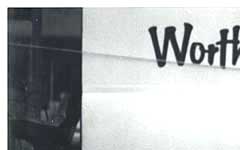 |
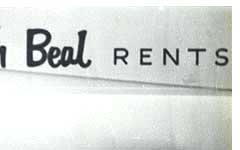 |
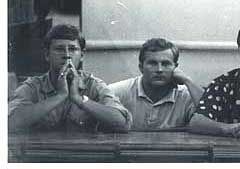 |
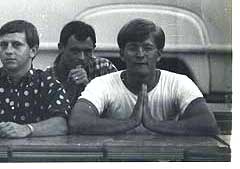 |
"Copyrighted and originally printed on The Lance Monthly by Mike Dugo".
"Listen live, online to their music at Beyond The Beat Generation, 60's garage and psychedelia".